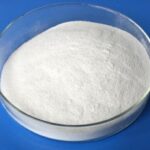Disodium hydrogen phosphate, also known by its chemical formula Na2HPO4, is a white, odorless powder that is commonly used in a variety of industrial and laboratory applications. Here are some general specifications of this compound:
pH: alkaline (pH ranges from 8.0 to 11.0, depending on concentration)
Molecular weight: 141.96 g/mol
Melting point: 250 °C (482 °F; 523 K)
Boiling point: decomposes at 155 °C (311 °F; 428 K)
Density: 1.7 g/cm³
Solubility: highly soluble in water (approx. 47 g per 100 mL at room temperature)
Disodium hydrogen phosphate, also known as sodium hydrogen phosphate, is an important food additive that has been used in various food applications for decades. It is a white crystalline powder with a slightly salty taste and is commonly used as a buffering agent, emulsifier, thickener, and stabilizer in many food products. In this article, we will explore the use of disodium hydrogen phosphate in the food industry and its benefits.
Uses in Food
 One of the primary uses of disodium hydrogen phosphate in the food industry is to act as a pH buffer. It helps to maintain a stable pH level in processed foods, which can help to prolong their shelf life and prevent spoilage. This makes it a popular ingredient in canned foods, dairy products, and meat products.
One of the primary uses of disodium hydrogen phosphate in the food industry is to act as a pH buffer. It helps to maintain a stable pH level in processed foods, which can help to prolong their shelf life and prevent spoilage. This makes it a popular ingredient in canned foods, dairy products, and meat products.
Another common use of disodium hydrogen phosphate is as an emulsifier. It helps to blend fat and water-based ingredients together, creating a smooth and consistent texture. This property makes it a key ingredient in processed cheese, salad dressings, and baked goods.
Disodium hydrogen phosphate also acts as a thickener and stabilizer in many food products. It can improve the viscosity and texture of soups, sauces, and gravies, as well as prevent ice crystals from forming in frozen desserts.
Benefits of Disodium Hydrogen Phosphate
The use of disodium hydrogen phosphate in the food industry offers several benefits, including:
- Improved Food Texture: Disodium hydrogen phosphate can improve the texture and consistency of many processed foods, making them more appealing to consumers.
- Extended Shelf Life: The buffering properties of disodium hydrogen phosphate can help to extend the shelf life of many food products, reducing waste and increasing profitability.
- Cost-Effective: Disodium hydrogen phosphate is a relatively inexpensive ingredient that can be used in small quantities to achieve the desired effect.
Conclusion
Disodium hydrogen phosphate is a versatile ingredient in the food industry, offering unique properties that can improve the texture, stability, and shelf life of many processed foods. Its versatility and effectiveness make it an important tool for food manufacturers looking to create high-quality products that appeal to consumers.





